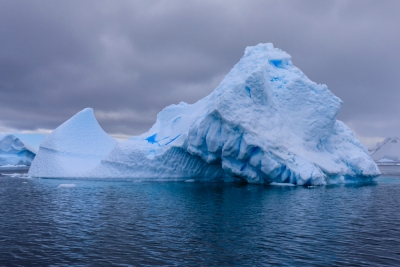
|
Icebergs are huge pieces of ice that break off glaciers and float into the ocean. They can be more than five metres in height but most of their bulk remains submerged. Icebergs are dangerous. If a ship hits an iceberg, it can be badly damaged and sink. The dangerous waters are in the North Atlantic, around Greenland, and in the Southern Hemisphere around Antarctica. Since I912, after the luxury liner Titanic hit an iceberg and sank, the International Ice Patrol tracks icebergs and warns ships in the North Atlantic. However, satellite data used to monitor icebergs can only spot icebergs larger than 500 m2. |
Icebergs are large chunks of ice that break off from glaciers. This process is called calving. Icebergs float in the ocean, but are made of frozen freshwater, not saltwater.
Most icebergs in the Northern Hemisphere break off from glaciers in Greenland. Sometimes they drift south with currents into the North Atlantic Ocean. Icebergs also calve from glaciers in Alaska.
In the Southern Hemisphere, almost all icebergs calve from the continent of Antarctica.
Some icebergs are small. Bergy bits are floating sea ice that stretch no more than 5 meters (16.5 feet) above the ocean. Growlers are even smaller.
Icebergs can also be huge. Some icebergs near Antarctica can be as big as Sicily, the largest island in the Mediterranean Sea. As little as one-eighth of an iceberg is visible above the water. Most of the mass of an iceberg lies below the surface of the water. This is where the phrase “tip of the iceberg” came from, meaning only part of an idea or problem is known.
There are many different kinds of icebergs. Brash ice, for instance, is a collection of floating ice and icebergs no more than 2 meters (6.5 feet) across. A tabular berg is a flat-topped iceberg that usually forms as ice breaks directly off an ice sheet or ice shelf.
The ice below the water is dangerous to ships. The sharp, hidden ice can easily tear a hole in the bottom of a ship. A particularly treacherous part of the North Atlantic has come to be known as Iceberg Alley because of the high number of icebergs that find their way there. Iceberg Alley is located 250 miles east and southeast of Newfoundland, Canada.
Picture credit: Google




